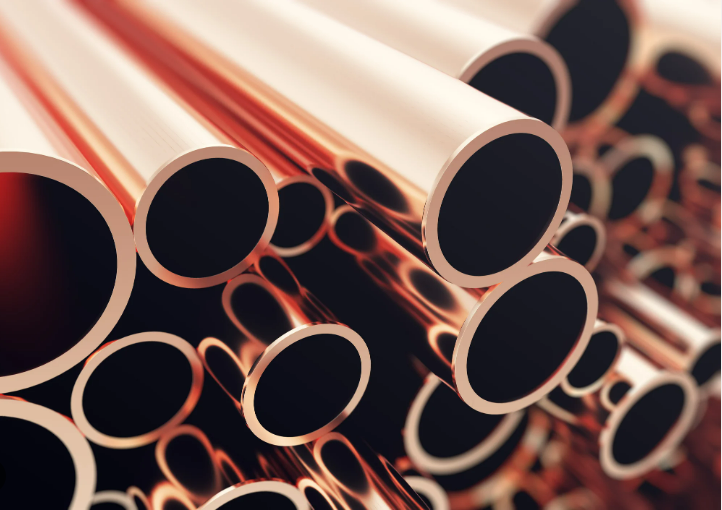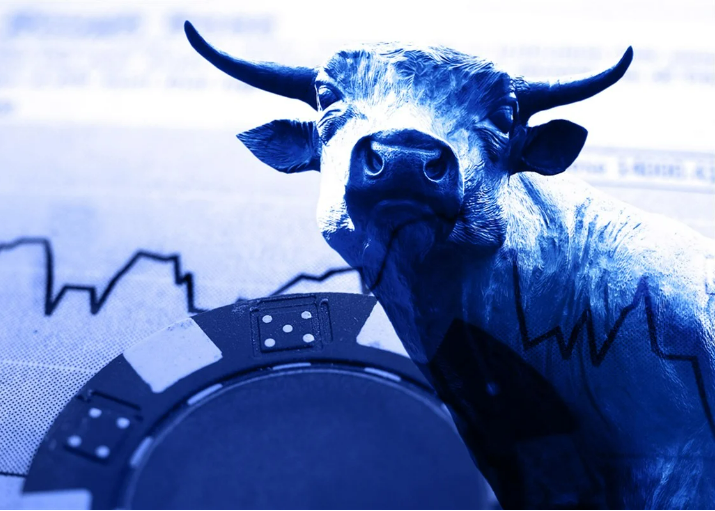A Guide to Invest in Copper: Ways to Buy and Sell It


Copper has been in the spotlight recently due to its soaring prices driven by increasing demand. With numerous industrial applications, including in electric vehicles, copper’s relatively tight supply means any significant surge in demand could cause its price to skyrocket.
While copper isn’t traditionally seen as a safe haven investment like gold and silver, it still holds potential. In inflationary periods, copper could serve as a store of value, even though it doesn’t generate cash flow. This makes it a viable option for hedging investments in stocks and bonds, thereby diversifying your portfolio.
Here are five ways to invest in copper and key risks to consider.
5 ways to invest in copper
1. Copper bullion
You can purchase copper bullion similarly to gold bullion, buying it as coins or bars. While holding and viewing physical copper can be satisfying, this form of investment has significant drawbacks, primarily the need to safeguard your copper.
To profit from copper bullion, the price must rise. Unlike other copper investments such as mining companies, where production growth can also drive profits, bullion relies solely on price increases.
You can buy physical bullion through online dealers like APMEX or JM Bullion, or through local dealers, pawn shops, and collectors.
It’s crucial for copper traders to be aware of the spot price—the current market price—to ensure fair transactions. When investing in copper, opt for bars rather than coins or collectibles that may carry additional costs for their collectible value instead of just their copper content.
Risks: The primary risk of owning bullion is the need for secure storage. If you have a substantial amount, you’ll need to protect it. Additionally, at around $4.30 per pound, storing a significant value in copper means handling a lot of metal.
Another major downside is the potential loss of value during purchase and sale. Brokers buy at lower than the spot price and sell at higher than the spot price. If you need to liquidate quickly, you could receive significantly less than the market value.
2. Copper miner stocks
If you don’t want to own copper directly, you can invest in companies that mine it. For investors, this may be one of the best ways to benefit from the metal’s potential upside.
Investing in a mining company offers two potential profit avenues, unlike bullion. If copper prices rise, the miner’s revenue increases. Additionally, if the mining company boosts production over time, it can significantly enhance its profit potential.
Risks: Investing in individual mining stocks requires a thorough understanding of the business, which can be complex. Many mining companies carry significant risks, so choosing a reliable company is crucial. It’s advisable to avoid junior miners without established, productive mines. Look for proven players in the industry to mitigate risk and increase the likelihood of a successful investment.
3. Copper miner ETFs
If you prefer not to delve into the specifics of individual mining stocks, consider an exchange-traded fund (ETF) that holds a collection of miners. Many mining companies operate across various sectors, such as gold and silver, so you’ll get a mix of different mining companies rather than a pure copper play. However, this diversification can be advantageous.
ETFs hold dozens of different mining stocks, making your portfolio less risky than owning just a few individual stocks. A single stock’s underperformance will have less impact on your overall portfolio.
Some of the larger funds in this category include:
- Global X Copper Miners ETF (COPX) with an expense ratio of 0.65%
- Sprott Junior Copper Miners ETF (COPJ) with an expense ratio of 0.78%
- iShares Copper and Metals Mining ETF (ICOP) with an expense ratio of 0.47%
These funds can be purchased through any of the best brokers for ETFs.
Risks: While a diversified fund can protect against the poor performance of a single company, it won’t shield you from issues affecting the entire industry. A downturn in copper prices or slower industrial activity could impact all copper miners, hurting the fund’s performance despite its diversification. Additionally, be mindful of the types of companies included in the fund. Some may have more established miners, while others may include riskier junior miners.
4. Copper futures
Copper futures offer a way to profit from rising copper prices and can also allow you to benefit if prices fall. The primary advantage of trading copper futures is the significant leverage they provide, enabling you to control much more copper than you could by purchasing the metal directly. If the price moves in your favor, you could potentially turn a small investment into a large gain quickly.
Futures trading is best suited for sophisticated investors and requires a broker that offers futures trading services, which not all major brokers do. Despite some drawbacks, futures are a method to potentially make (or lose) money quickly based on the movements of this already volatile commodity.
Risks: The leverage in futures trading can amplify both gains and losses. If copper prices move against your position, you’ll need to deposit additional funds with the broker, known as margin, to maintain your position. If you fail to do so, the broker will close your position, resulting in a loss.
5. Copper futures ETFs
Some ETFs handle trading futures contracts on your behalf, making it easier to invest in and speculate on copper without needing a futures account. You can trade these funds through a traditional broker account, simplifying the process.
One example is the United States Copper Index Fund (CPER), which has an expense ratio of 1.04 percent. This fund aims to mirror the performance of copper futures on the COMEX exchange and primarily holds copper futures contracts, though it may also include other financial assets.
Risks: A copper futures ETF might be more suitable for capturing short-term price movements rather than for long-term buy-and-hold strategies. The fund charges a high expense ratio, and the process of rolling futures contracts can lead to the erosion of asset value over time.
Why investors like copper

Investors may find copper appealing for several reasons, including:
Price Appreciation Due to Underlying Demand: Copper’s vital role in industrial applications, especially in growing sectors like electric vehicles and electrical infrastructure, ensures sustained demand. This demand exerts upward pressure on copper prices, promoting price appreciation.
Inflation Hedge: As a commodity, copper can serve as an inflation hedge. Investors can capture price increases that might otherwise be passed on to consumers.
Diversification: Adding commodities like copper to a portfolio can help mitigate volatility and reduce overall risk, providing a smoother investment experience.
However, there are reasons why investors might avoid copper:
Volatility: Copper, like many commodities, can be highly volatile, experiencing significant price fluctuations. This volatility can be challenging to manage, even for prepared investors.
Unattractive Bullion: Copper bullion investments may seem unappealing due to the metal’s low price-to-weight ratio. Additionally, bullion does not generate cash flow, offering fewer opportunities for profit compared to other copper investments.
Investors considering commodities like copper should carefully evaluate the profit potential and determine if it aligns with their investment strategy.
In Conclusion
Investing in copper might make sense for your portfolio, depending on your assessment of the fundamentals driving its demand and the long-term outlook. Due to the drawbacks of investing directly in the metal, it can often be more advantageous to invest in cash-flowing businesses that produce copper. This approach allows you to benefit in multiple ways and ensures that you can trade at fair market value whenever needed.








